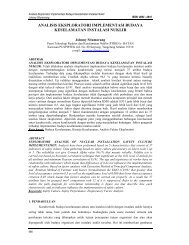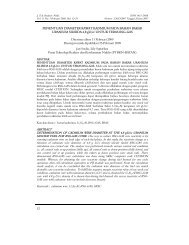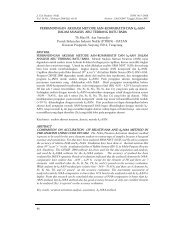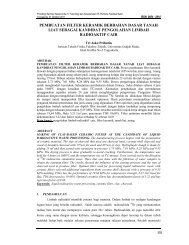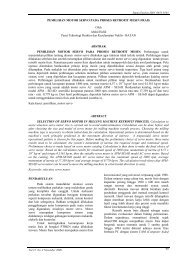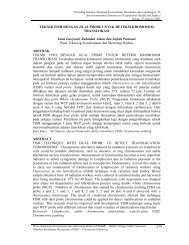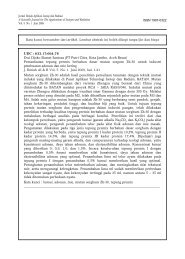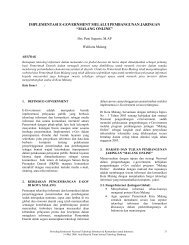THE TOP 10 ALGORITHMS OF THE 20TH CENTURY M ... - Batan
THE TOP 10 ALGORITHMS OF THE 20TH CENTURY M ... - Batan
THE TOP 10 ALGORITHMS OF THE 20TH CENTURY M ... - Batan
Create successful ePaper yourself
Turn your PDF publications into a flip-book with our unique Google optimized e-Paper software.
<strong>THE</strong> DECOMPOSITIONAL APPROACH TO MATRIX COMPUTATION<br />
There are many matrix decompositions, old and new, and the list of the latter<br />
seems to go on growing. Nonetheless, six decompositions hold the center, because<br />
they are useful and stable. The six decompositions are described briefly below.<br />
1. The Cholesky Decomposition. Given a positive definite matrix A, there is a<br />
unique upper triangular matrix R with positive diagonal elements such that<br />
T<br />
A = R R . In this form, the decomposition is known as Cholesky decomposition.<br />
T<br />
It is often written in the form A = LDL , where D is diagonal and L is a lower<br />
triangular matrix with 1s on the diagonal. Cholesky decomposition is used<br />
primarily to solve positive definite linear systems.<br />
2. The LU Decomposition. Let A is an N x N matrix. There are permutations P and<br />
T<br />
Q such that P AQ = LU , where L is unit lower triangular and U is upper<br />
triangular. The matrices P and Q are not unique, and the process of selecting them<br />
is known as pivoting. LU decomposition is used primarily for solving linear<br />
systems Ax = b, where A is a general matrix. Cholesky and LU decompositions<br />
can be computed with the help of Gaussian elimination.<br />
3. The QR Decomposition. See section IV above.<br />
4. The Spectral Decomposition. Let A is an N x N symmetric matrix. There is an<br />
orthogonal matrix V such that A = VΛV<br />
, where Λ = diag( λ1,<br />
L , λ N ) . If i v<br />
denotes the i-th column of V, then Av i = λi<br />
v i . Thus ( i , i ) v λ is an eigenpair of<br />
A, and the spectral decomposition of A shows the eigenvalues of A along with<br />
complete orthonormal system of eigenvectors.<br />
5. The Schur Decomposition. Let A is an N x N matrix. There is a unitary matrix U<br />
H<br />
H<br />
such that A = UTU , where T is upper triangular and U is the conjugate<br />
transpose of U. The diagonal elements of T are the eigenvalues of A, which, by<br />
appropriate choice of U, can be made to appear in any order. This decomposition<br />
is called the Schur decomposition of A. A real matrix can have complex<br />
eigenvalues and hence a complex Schur form. By allowing T to have a real 2 x 2<br />
blocks on its diagonal that contain its complex eigenvalues, the entire<br />
decomposition can be made real. This is sometimes called a real Schur form. After<br />
a preliminary reduction to Hessenberg form, the Schur form is computed with the<br />
QR algorithm.<br />
6. The Singular Value Decomposition / SVD. Let A be an M x N matrix with M ≥<br />
T ⎛Ó⎞<br />
N. There are orthogonal matrices U and V such that U AV = ⎜ ⎟ , where<br />
⎝ 0 ⎠<br />
( , , ) σ σ Ó = L , ≥ σ ≥L<br />
≥ σ ≥ 0 . This is called the SVD of A. If<br />
diag 1 N<br />
T<br />
σ1 2 N



